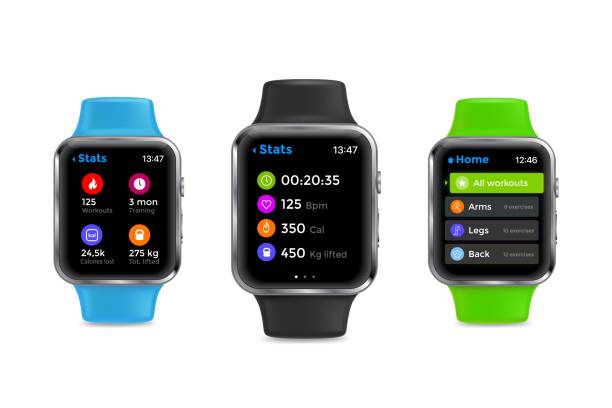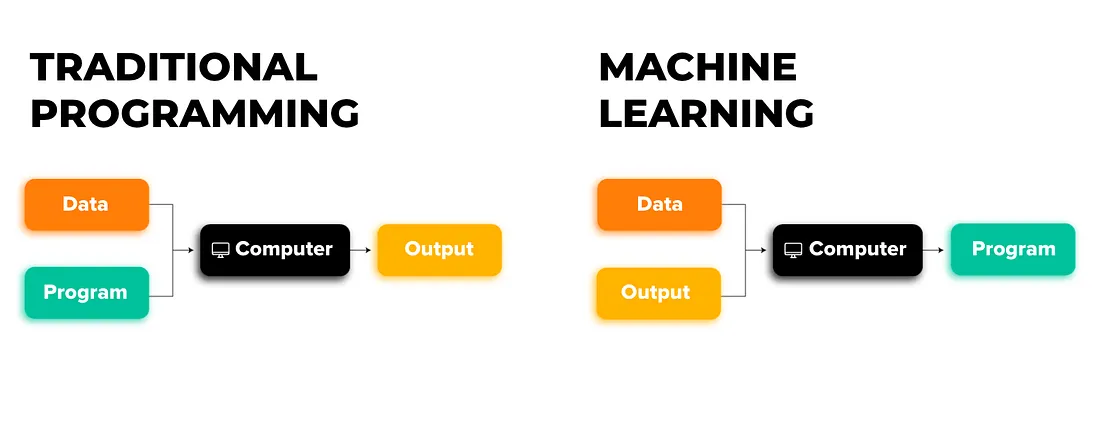In today’s world, technology is no longer confined to our desks, pockets, or bags. It’s becoming an integral part of our daily lives—right on our wrists. Enter the smartwatch: a revolutionary device that has transformed the way we interact with technology. Once just a concept straight out of science fiction, smartwatches have quickly evolved from luxury items to essential gadgets that combine fashion, functionality, and convenience into one sleek package.
But what exactly is a smartwatch? At its core, a smartwatch is a wearable device that mimics the functions of a traditional watch while adding an impressive array of features like fitness tracking, notifications, music control, and even the ability to make calls. It’s more than just an accessory—it’s a personal assistant, a fitness coach, a communicator, and a style statement, all rolled into one.
However, smartwatches are much more than just fashionable tech. They represent the convergence of technology, health, and lifestyle, offering unparalleled convenience for those on the go. As their functionality continues to expand, the smartwatch is poised to become an even more integral part of our daily routines.
The Evolution of Smartwatches: From Simple Devices to Smart Assistants
To truly understand the significance of smartwatches, it’s important to look at how they evolved. The first timepiece on record was a simple mechanical device designed to help people keep track of time. These watches were basic, functional, and, in many ways, timeless. Over the centuries, watches evolved from simple timekeeping devices to mechanical marvels, incorporating features like alarms, calendars, and even compasses.
However, the real breakthrough came in the 1980s and 1990s with the introduction of digital watches. Brands like Casio and Seiko started integrating features like calculators, backlit displays, and rudimentary electronic functions. These watches began to push the boundaries of what a timepiece could do.
It wasn’t until the early 2000s that the first true smartwatches began to appear. In 2004, Fossil launched the first wristwatch with Bluetooth connectivity, allowing users to sync it with their mobile phones. This marked the beginning of a new era in wearable technology. In 2015, Apple released the first Apple Watch, a game-changer in the smartwatch industry. With its combination of sleek design, powerful features, and seamless integration with the iPhone, the Apple Watch set the standard for what smartwatches could be.
Since then, numerous companies, including Samsung, Garmin, Fitbit, and others, have entered the market, offering their own unique takes on what a smartwatch should be. Today, smartwatches have become ubiquitous, with millions of devices being sold every year. They’re no longer just for tech enthusiasts—they’re for everyone.
Smartwatch Design: The Intersection of Style and Functionality
One of the key elements that sets smartwatches apart from other wearable technology is their design. While fitness trackers and other devices might prioritize function over fashion, smartwatches are designed to be both stylish and functional. After all, they sit on your wrist all day, and you’ll likely wear them in public. For this reason, manufacturers put as much emphasis on aesthetics as they do on performance.
Smartwatches come in a wide variety of designs, catering to different tastes and lifestyles. You’ll find sportier models with rugged designs, sleek and minimalist watches for more fashion-conscious consumers, and elegant timepieces for those who prefer a more traditional look. Many smartwatches also feature customizable bands, allowing users to choose a style that suits their preferences, whether that’s leather, silicone, or metal.
The face of the smartwatch is another important design element. Most smartwatches feature a digital touchscreen display that allows users to interact with the device. The screen can be customized with different watch faces, allowing you to tailor the watch’s appearance to suit your mood or occasion. Some smartwatches also come with the option of circular or square faces, adding further variety to the design.
In recent years, manufacturers have also focused on making smartwatches more durable and resistant to wear and tear. Many models are now water-resistant, scratch-resistant, and even shockproof, making them suitable for a wide range of activities—from swimming to hiking.
Smartwatch Functionality: More Than Just Timekeeping
While smartwatches are first and foremost designed to tell time, their capabilities go far beyond simple timekeeping. These devices are packed with features that make them powerful tools for managing your health, staying connected, and streamlining your day-to-day life.
Health and Fitness Tracking
One of the most popular functions of smartwatches is health and fitness tracking. In fact, many people buy smartwatches specifically for this reason. Modern smartwatches come equipped with a variety of sensors that can track everything from your heart rate to your steps, calories burned, and sleep patterns. Some models even include advanced features like ECG monitoring, blood oxygen saturation measurement (SpO2), and electrodermal activity (EDA) sensors for stress monitoring.
The integration of health tracking has turned the smartwatch into a personal fitness coach. Many devices are compatible with apps like Apple Health, Google Fit, or third-party fitness apps that allow users to track their progress, set goals, and receive personalized recommendations. For example, the Apple Watch includes an activity ring system that encourages users to close three rings each day: Move, Exercise, and Stand. This gamification of fitness helps users stay motivated and on track with their health goals.
For athletes or fitness enthusiasts, certain smartwatches also offer specialized modes for running, cycling, swimming, and other sports. These watches track specific metrics relevant to each activity, such as distance, pace, and lap times, and provide real-time feedback to help users improve their performance.
Communication and Notifications
Smartwatches make it easier to stay connected while keeping your phone in your pocket or bag. One of the most useful features of a smartwatch is its ability to receive notifications. Whether it’s a text message, a social media alert, or a calendar reminder, smartwatches ensure that you never miss important updates. Notifications can be received directly on the watch face, and many devices allow users to interact with these notifications by replying to messages, making phone calls, or dismissing alerts.
Some smartwatches also feature voice assistants, such as Siri (on the Apple Watch), Google Assistant (on Wear OS devices), or Bixby (on Samsung Galaxy Watches). These voice assistants enable hands-free communication, allowing users to perform tasks like sending messages, setting reminders, or asking for directions, all with simple voice commands.
For those who need to make calls without taking out their phones, many smartwatches also feature built-in speakers and microphones, enabling users to make and receive calls directly from their wrists. Some models even include cellular connectivity, which allows you to use the watch independently of your phone, making it perfect for people who want a more streamlined, phone-free experience.
Music and Entertainment
Many smartwatches also double as portable entertainment devices. You can listen to music, podcasts, or audiobooks directly from the watch. Some models come with onboard storage, so you can load your favorite tracks and listen to them while you exercise or go for a walk. In addition, streaming services like Spotify and Apple Music offer app compatibility, allowing you to control playback directly from the watch.
For those who enjoy a more immersive experience, certain smartwatches can sync with wireless headphones, providing a seamless music experience. This is especially popular among runners and fitness enthusiasts who want to listen to music without the hassle of carrying their phone.
GPS and Navigation
Smartwatches equipped with GPS functionality are ideal for people who love to explore the outdoors or engage in activities like running, hiking, or cycling. These watches use satellite navigation to track your location and provide real-time route information. Many smartwatches also include built-in maps, allowing users to follow directions or discover nearby points of interest.
The GPS feature is also helpful for tracking workouts and measuring performance. For example, runners can track their distance, pace, and route, while cyclists can monitor their speed and elevation gains.
Mobile Payments
In the age of contactless payments, smartwatches have evolved to support mobile payment systems like Apple Pay, Google Pay, and Samsung Pay. These services allow users to make purchases by simply tapping their wrist on a payment terminal. This functionality eliminates the need to carry cash or cards, making shopping faster, more convenient, and more secure.
The addition of mobile payment functionality has made smartwatches even more useful in daily life. Whether you’re grabbing a coffee, paying for public transportation, or purchasing a snack, your smartwatch can handle it all with just a tap.
Smartwatch Apps: Expanding Functionality
One of the most exciting aspects of smartwatches is their ability to run apps. Much like smartphones, smartwatches can download and run a wide variety of applications, extending their functionality beyond the built-in features. There are apps for fitness tracking, meditation, weather, news, productivity, and more.
The Apple Watch and devices running Wear OS (Android’s smartwatch platform) have robust app ecosystems, allowing users to download popular apps directly to their watches. Some apps sync with their smartphone counterparts, ensuring that your data is always up-to-date and available on both devices. For example, fitness apps like Strava, Nike Run Club, and MyFitnessPal integrate seamlessly with smartwatches, providing additional tools for managing health and fitness goals.
The Smartwatch Market: A Diverse Landscape
The smartwatch market is diverse, with different manufacturers offering devices that cater to different needs, preferences, and budgets. While Apple dominates the high-end market, companies like Samsung, Garmin, Fitbit, and Huawei also provide strong alternatives, each offering a unique combination of features, design, and price points.
Apple Watch remains the leading player in the smartwatch market, offering a seamless integration with the iPhone and a host of advanced features. Its sleek design, combined with robust health tracking capabilities and a wide range of third-party apps, makes it the go-to choice for many iPhone users.
Samsung’s Galaxy Watch line competes directly with the Apple Watch, offering a circular display, fitness tracking features, and compatibility with both Android and iOS devices. Samsung’s Tizen operating system provides a user-friendly interface, and the company has placed a strong emphasis on health and fitness features, making its watches ideal for athletes and health-conscious consumers.
Garmin and Fitbit focus more on fitness and outdoor activities, offering smartwatches with specialized sensors and long battery life. Garmin, in particular, is known for its rugged outdoor watches, which are perfect for hikers, runners, and cyclists. Fitbit, now owned by Google, remains one of the most popular choices for those seeking affordable, easy-to-use fitness tracking watches.
Huawei and other Chinese manufacturers also offer smartwatches at competitive prices, often with features like extended battery life and robust fitness tracking. While these brands may not have the same level of brand recognition in the Western market, they offer solid alternatives at a fraction of the price.
The Future of Smartwatches: Innovations on the Horizon
The smartwatch market is still in its infancy, and the technology is evolving rapidly. As smartwatches continue to improve, we can expect to see even more advanced features that will make them even more indispensable. Here are a few of the innovations we can look forward to in the coming years:
- Improved Battery Life: Battery life is one of the most common complaints about smartwatches. However, manufacturers are working on improving battery efficiency, with some models already lasting up to several days on a single charge. As technology advances, we can expect to see longer-lasting batteries and faster charging capabilities.
- Better Health Monitoring: While today’s smartwatches already include advanced health features, the future promises even more sophisticated sensors. Future smartwatches may include blood pressure monitoring, glucose tracking, and even more advanced ECG or heart monitoring features, providing users with a comprehensive picture of their health.
- AR Integration: Augmented reality (AR) has the potential to revolutionize how we interact with smartwatches. In the future, we may see smartwatches that overlay digital information onto the real world, enabling users to access data, directions, or notifications in a more immersive way.
- More Independent Functionality: Currently, many smartwatches rely on syncing with smartphones for full functionality. However, future devices may become more independent, offering features like enhanced cellular connectivity, which would allow them to operate fully on their own without needing a phone nearby.
- Enhanced Customization: Future smartwatches may offer even more customization options, from customizable watch faces to modular designs that allow users to swap out bands, cases, and sensors.
In conclusion, smartwatches are much more than simple timepieces. They have evolved into powerful, multifunctional devices that offer a wide range of features, from health and fitness tracking to mobile payments and entertainment. As the technology continues to improve, smartwatches will become even more integrated into our daily lives, helping us stay connected, improve our health, and manage our tasks with unprecedented convenience. Whether you’re a fitness enthusiast, a tech lover, or just someone who appreciates the blend of style and functionality, the smartwatch is here to stay—and it’s only getting smarter.






